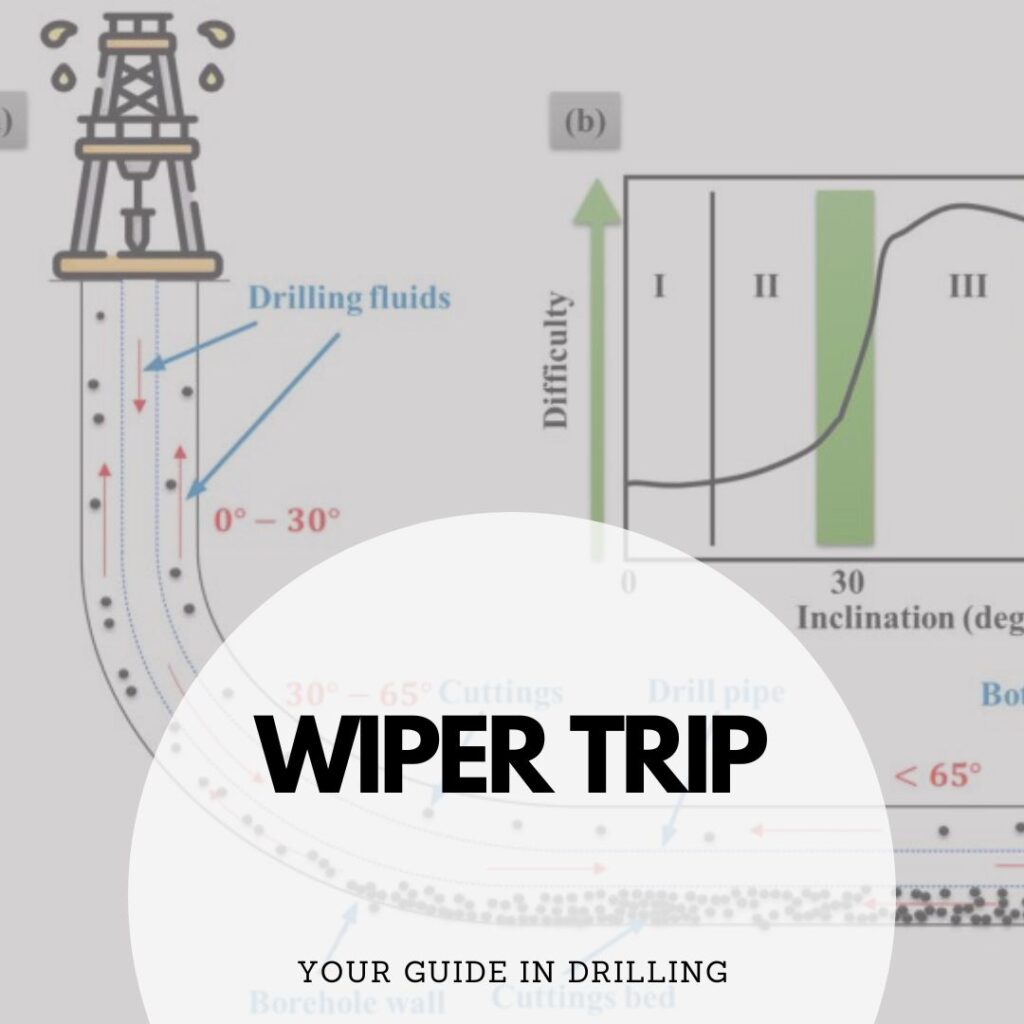A wiper trip is often made before running the casing. This is because it is essential that the casing, once started in the hole, reaches the planned casing setting depth with minimal trouble. Therefore, the hole must be in the best possible condition before running the casing.

Procedure
On the last trip out of the hole (or after reaching the casing point), the drill string will be “strapped” out of the hole. This means that each stand is measured as it is racked back. This will help checking that the total depth is correct and that there is no error in the driller‘s tally. The difference between the driller’s and mud logger‘s depth should also be checked. This avoids the unhappy state of affairs when the casing string is found to be longer than the depth of the hole!
Depending on the hole conditions, only the minimum number of drill collars in the BHA required for possible reaming must be run to save time. On the other hand, it is sometimes necessary to install additional drilling stabilizers and reamers in the wiper trip assembly, particularly for shallow casing strings. This will give the assembly a rigidity comparable to that of the casing and make it possible to ream out ledges, which would not even be noticed if drill collars and a drilling bit were only run in hole.
During the wiper trip, the drilling fluid will also be conditioned to the required mud properties. Concerning the conditions in the well, the drilling fluid’s plastic viscosity and mud yield point should be reduced as far as practical.
While circulating to condition drilling fluid, the annular velocity should be at least as high as during drilling or a little higher, if possible. This ensures that the hole is properly cleaned and free from fill. The amount of hole fill found should be recorded and should be used to indicate when to install the circulation head on the casing when approaching a bottom. Circulation should be continued until returns are free of cuttings and, if necessary, until the required drilling fluid properties have been achieved.
When We Need A Wiper Trip?
A wiper trip is recommended if there is any doubt about the hole’s condition, and it has been a standard procedure in the past. However, if :
- There were no hole problems while drilling the section,
- The new bit always went with relative ease to within a short distance of the bottom after a trip,
- The logging tools reached close to the bottom with no difficulty.
- There were no hole-related problems while logging,
- And there is no percolating gas to circulate out.
Then there should be a high level of confidence that the hole will remain in good condition and the wiper trip can, therefore, be omitted. If no wiper trip is planned, the drilling fluid must be conditioned for running casing before pulling out for logging.